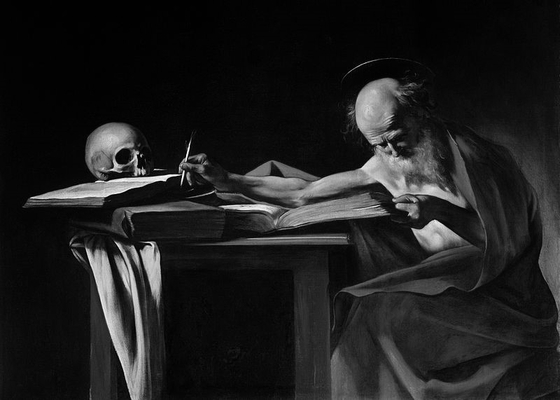Archives
-
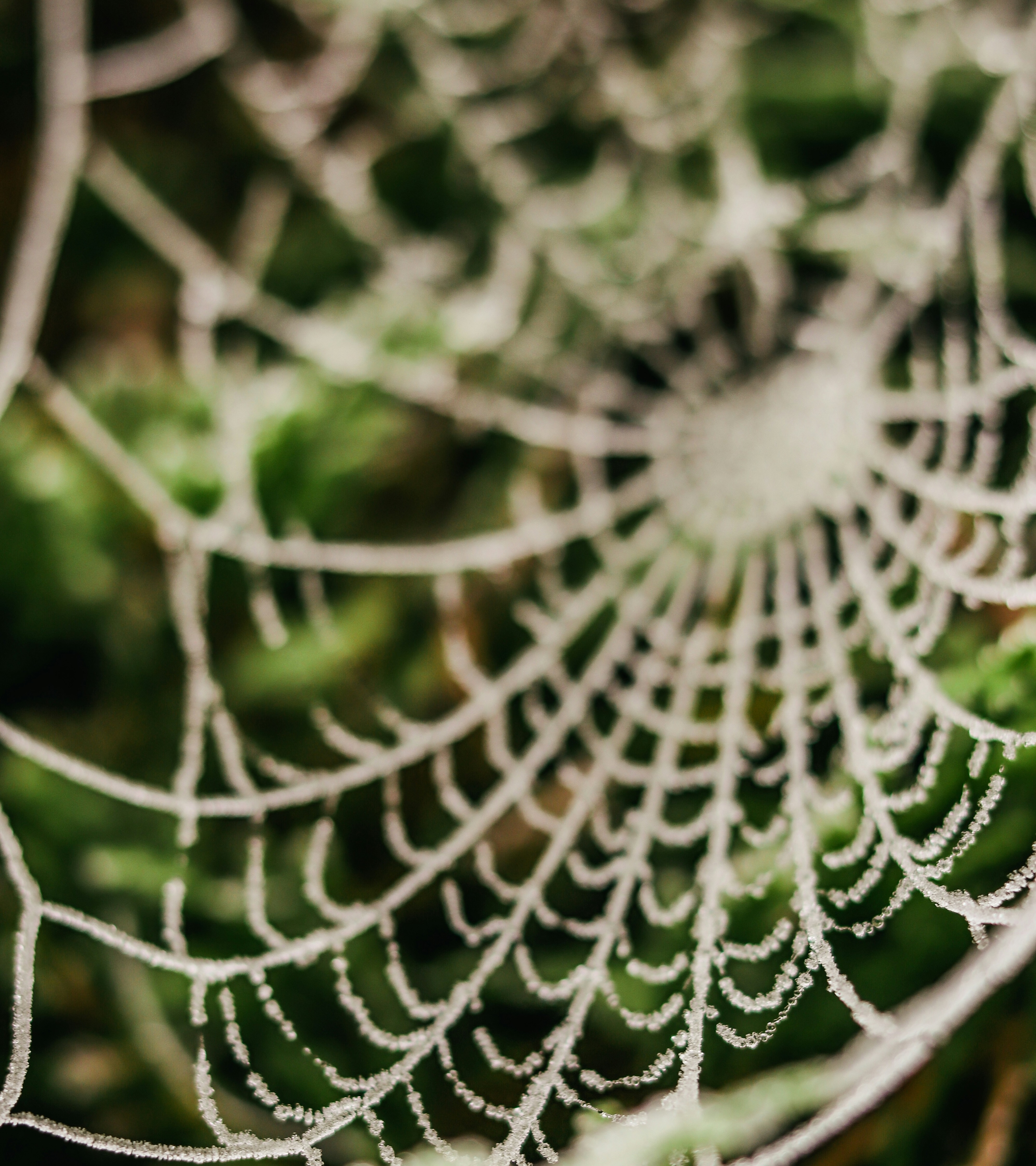
Family
Vol. 36 (2025)Isabel Schueler (Editor-in-Chief) & Alisha Palmer (Deputy Editor)
The cover image of this issue depicts a spider’s web, an apt metaphor for the irreducible complexities of the family as both an experiential site and an object of study. Visually, the interconnected threads of the spider’s web evoke the intimate and often complex connections within the family. Moreover, the dualities of the web – a naturally occurring object and simultaneously one that is carefully, purposefully constructed in addition to its dual functions as a home, a habitation with connotations of stability and safety, and a trap, a mechanism of enclosure and violence – speaks to the central problems of the family.
The family, as an ostensibly biological group has been naturalised as the fundamental unit of collective organisation. The family as a natural phenomenon, as theorists and historians have demonstrated time and again, is belied by its historical and geographical contingency. Queer theory in particular has emphasised that the family is a socio-culturally produced form. Foundational texts like Sara Ahmed’s Queer Phenomenologyinvites us to “consider the family as an artificial social group” and to explore the objects, logics, institutions and technologies through which the family has been reproduced and naturalised (73). As feminist and queer theorists have endeavoured to show, the family is neither innocent nor immutable. Protecting certain kinds of familial structures has long provided the justification for the ongoing legal regulation of sex, gender, marriage and reproduction, making the family a contentious site for non-normative subjects. In 2025, the protection of certain kinds of families at the expense of others has fuelled transphobic legislation, the re-criminalisation of abortion, attacks on Palestinians, and the forced separation, incarceration, and deportation of immigrants.
On the other hand, the family has proven to be a productive site for imagining new forms of care and ethical responsibility. From the queer (and not always human) networks of affiliation in the Queer Ecologiesanthology to the capacious and resistant family-making practices of Sadiya Hartman’s Wayward Lives, Beautiful Experiments, the family continues to inspire the examination, critique, and reworking of both social organisation and academic method. It is these complexities that have caused scholars the world over, and now us, to ask: in the context of continued abuses conducted in the name of family against families, how do we engage with ‘the family’? This intractability threads web-like through the nine articles that comprise this 36thissue of FORUM. It is also picked up poetically and reflectively by our two guest contributors Carl Alexandersson and Siân MacGregor.
--
Many, many thanks to the following people for their excellent work in reviewing and editing this issue:
Chun Sui 'Christopher' Chan, Olivia Fischer, Mariane Gallet, Avani Udgaonkar, Alice Eaves, Alyssa Chua, Ariana Sutherland, Dara Carr, Erin Symons, Hao Yu Hu, Katherine Arrington, Morgan Connor, Neeti Kapoor, Sarah Vickery, Sara Yahya Hamed, Yi Song, and Zoe Robertson.
Thanks as well to the rest of our PGR colleagues and the LLC Postgraduate Research Office.
-

Emotion and Affect
Vol. 35 (2024)Issue 35: Emotion and Affect
Claudia Sterbini (Editor-in-Chief) & Isabel Schueler (Deputy Editor)
Affect theory turns our attention towards a re-contextualisation of emotional and affective experiences within past and contemporary constructions of race, gender and sexuality. It leads us towards the para-rational zones of lived experience (sensations, disturbances, intensities, etc) and offers new interdisciplinary methodologies. The study of emotionality interrogates the boundary between human and non-human, with contemporary research in ecological feeling playing with the border between humans and other species, nature and geological formations. This issue is interested in how these contemporary and modern affective debates have impacted, and continue to impact, the ways in which we think about feeling.
Critical studies into emotionality explore the materiality and the somatics of emotion, offering new perspectives in the ways in which artistic forms have engaged with and responded to affective dimensions. Recent publications such as Xine Yao’s Disaffected (2021) and Lauren Berlant’s On the Inconvenience of Other People (2022) examined attachment both interdisciplinarily and intersectionally, considering the ways in which sentimental paradigms are universalised, engaged with and criticised through literary and artistic media. In the same vein, this issue features discussions of the limits and boundaries of feeling, and in new interdisciplinary, intersectional and contextual understandings of feeling, affect and emotionality.
--
Many, many thanks to the following people for their excellent work in reviewing and editing this issue:
Elizabeth Blakemore, Chun Sui 'Christopher' Chan, Niki Cleland-Hura, Emma Dussouchaud-Esclamadon, Olivia Fischer, Mariane Gallet, Maxime Geervliet, Matthew Lear, Kai Lim, Alisha Palmer, Moss Pepe, Angelina Rao, Avani Udgaonkar, and Lara Virrey.
Thanks as well to the rest of our PGR colleagues and the LLC Postgraduate Research Office.
-

Trans-
Vol. 34 (2023)Issue 34: Trans-
Ash Jayamohan (Editor-in-Chief) & Claudia Sterbini (Deputy Editor)
Trans- is powerful: attaching itself to concepts, it challenges supposedly settled knowledge about the world we live in. In FORUM’s 34th issue, this destabilisation becomes central. We draw attention to the importance the prefix ‘trans-’ has acquired in recent decades as an index of movement, crossing, and shifting – and we are interested in your approaches to all that trans- has to offer, as both description and method: transnationality, translation, transdisciplinary, transgender…
Trans- constructs new epistemic trajectories. Translation Studies troubles canons, transdisciplinary fields expand our classrooms, and transnational narratives become powerful tools in questioning naturalised national confines. In this new space of trans-, paradoxical themes coexist in moments of ‘magical realism’, in the words of Marisa De Andrade.
Our intellectual promiscuity catches up to the art we study: the ‘scholarly’ fables of Jorge Luis Borges’ Labyrinths (1962); the mixed materials of Wangechi Mutu’s artworks; the musical wanderings of musicians such as Rina Sawayama; the tumults of expatriation as ranging from the epic sprawl of the Odyssey to the hard-won joys of Erasmus in Gaza (2021).
Finally, of course, trans- is best known in its coupling with and troubling of gender. Trans criticism such as C. Riley Snorton’s Black on Both Sides (2017) has drawn attention to the complex, racialised logics of trans exclusion, while trans liberation’s social possibilities shimmer through the photography of Juliana Huxtable and Samuel R. Delaney’s Triton (1976).
We find that art and culture, in all their forms, expand and enhance our understanding of trans-.
--
Many, many thanks to the following people for their excellent work in reviewing and editing this issue:
Elizabeth Blakemore, Chun Sui 'Christopher' Chan, Emma Dussouchaud-Esclamadon, Maxime Geervliet, Elisabeth Goemans, Sharon Hsieh, Alexandra Huang, Neelofer Korotana, Matthew Lear, Kai Lim, Alisha Palmer, Moss Pepe, Shivani Pillai, Isabel Schueler, Hannah Trifunovic, and Lara Virrey.
Thanks as well to the rest of our PGR colleagues and the LLC Postgraduate Research Office.
-

Aftermath
No. 32 (2021)Following periods of social, political, and economic turbulence governments and communities around the world rally in efforts designed to preserve, challenge, or radically overhaul the status quo. Although there is now some reason for optimism, we find ourselves faced with the aftermath of numerous upheavals. Is this a unique opportunity to use the tattered threads of the social fabric to make something new? Where do we go from here?
This is not the first time that we have been faced with these questions. The 32nd issue of FORUM aims to investigate representations of the aftermath of events and thus the way human beings look at themselves both individually and collectively.
Memories of past catastrophes help inform the process of building and re-building. The legacy of the Great War has allowed European countries to create founding myths which have facilitated the rise of totalitarianism on the continent. In the aftermath of the Second World War, the arts brought to light inequalities in the recovery effort, illustrated by Neorealism’s depiction of the unevenness of the post-war reconstruction in films like Bicycle Thieves (1948). Art and culture are the means by which we are able to create meaning out of chaos, and artists and writers have long recognised the potential of their work to explore or expose the implications of coping with the aftermath. Poets such as Wilfred Owen have challenged notions of patriotism in works like Dulce et Decorum Est (1920), revealing the cynical agendas underlying such discourses. The struggle of building civilisations is explored in William Goldman’s The Lord of the Flies (1954), while George Orwell’s allegorical novella Animal Farm (1945) reflects the events leading up to the Russian Revolution 1917 and then on to the Stalinist era of the Soviet Union.
Alongside reacting to real events, artists and writers have responded imaginatively, considering what could have happened or what might come to pass. Alternative history fictions like Philip K. Dick’s The Man in the High Castle (1962), dystopian fictions such as Margaret Atwood’s The Handmaid’s Tale (1985), and post-apocalyptic cinematography from Metropolis (1927) to Black Mirror (2011-2019), all posit “what if?”.
Many thanks to the following people for their work in reviewing and editing this issue:
Dave Allen*, Chloe Chandler, Rosalind Crocker, Chloë Edwards*, Lauren Gavin, Jessica Habib, Kaiyue He, Rebeka Lužaitytė*, Jamie Mackinnon, Molly McCracken, Alisha Palmer, Isla Parker, Leonie Price, Nicola Robertson*, Sheelalipi Sahana*, Nameeka Shahid, Anupama Shukla, Pia Singh, Hayley Smith*, Kathleen Stevens*, Georgia Toumara, Andreea Tint, Erin Walter*, Serena Wong, Victoria Worthington, and Abida Younas.
*Article Editors
Editors in Chief: Amy Waterson and Marco Ruggieri

Florea, John. A Poker-Face German Girl. 1945 (1985), Steven Kasher Gallery, New York.
-

Art, Disease, and Expression
No. 31 (2021)Art, Disease, and Expression
Science and art are the very nature of human attempts to understand and describe the world around us. As COVID-19 continues to dominate public discourse across the world - its ongoing effects trickling into every facet of our lives - the relationship between our health and how it affects the way we move through society has never felt more prescient. The 31st issue of FORUM aims to explore what has been identified as ‘sickness’ in literature and art through the years. How have the body and mind been treated by writers, artists, and cultural commentators - in sickness and in health.
Artists and authors have long recognised the metaphorical potential for sickness and disease to comment upon social and political issues. Charles Dickens, for example, shows how disease transcends social hierarchies in his novel Bleak House. Another example is Charlotte Perkins-Gilman, who in her short story, The Yellow Wallpaper illustrates perfectly the attitude towards the mental and physical health of women in the late nineteenth century. More recently, Ken Currie’s haunting portrait Three Oncologists (2002) expresses the sense of horror and anxiety cancer continues to evoke. The relationship between art and sickness is not unilateral. Frida Kahlo’s self-portraits often deal with her ailing body and she transmutes her body on canvas, with a vivid description of her medical history. Similarly, medical illustration and phrenological heads were used to help physicians puzzle out the mysteries of the human mind and body, while Leonardo da Vinci’s anatomical drawings are considered some of the most significant achievements of Renaissance science. Art therapy - a form of psychotherapy - uses art media as its main mode of expression and communication. There are multiple examples of sickness, disease, disability, (mis)diagnosis that pervades art - the body, especially those which are marked as ‘deviant’, ‘non-conforming’, ‘foreign’ and the psyche, which has been prodded and probed to solve universal questions of identity, human rationale and behaviour, has been continuously explored by authors, poets, artists and philosophers alike.
Many thanks to the following people for reviewing and editing this issue:
Adrija Ghosh*, Alice Orr*, Alley-Marie Jordan*, Amy Waterson*, Anna Kemball, Beth Price*, Dave Allen*, Emma Aviet, Lewis Ashman*, Lucilla Crespi*, Marco Ruggieri, and Trishna Mukherjee*
*Article Editors
Adrija Ghosh and Amy Waterson, Editors-in-Chief

Kahlo, Frida. The Broken Column (La Columna Rota), 1944. Museo Dolores Olmedo, Mexico.
-

Creative Resistance
No. 30 (2020)2019 emerged as a year of unprecedented political mobilization which led to the beginning of a new political culture characterized by protests and civil disobedience. Dissent erupted in cities across the world, and protesting voices grew louder as public fury occupied the streets, from Paris to Prague, Beirut to Catalonia, in Hong Kong, Santiago, Tehran, Baghdad, Budapest, New Delhi, and even London. In 2020, the death of George Floyd reignited Black Lives Matter protests in the streets of the USA and Europe, even in the midst of lockdowns aimed at stopping the spread of coronavirus. The ongoing effects of the virus look set to worsen existing inequalities, and the lockdown has threatened the future of many working in the arts and humanities, even as it highlights how important the arts are in the lives of people whose freedom is restricted.
The 30th issue of FORUM looks at Creative Resistance and how it emerges in different forms, in different cultures. Encompassing literature, music, visual arts and film, this issue examines how art has been used to voice dissent, and how protests are creating spaces for art which questions and thwarts the status quo. By focusing on art as resistance, these articles highlight how protest culture gives rise to creativity nurtured by the conflict between "the police forces of so many ideologies" (Camus) and how in turbulent times like ours, it gives us hope.
Many thanks to the following people for reviewing and editing this issue:
Agana Agana*, Manon Berset*, Huzan Bharucha*, Eliza Cottington*, Mara Curechian*, Ella March*, Keara Mickelson, Beata Migut, Dabangana Mishra*, Trishna Mukerjee*, Elizabeth Price, Dominic Richard, Marco Ruggieri*, Sarah Simpson, Rebecca String*, Amy Waterson
*Article editors
Adrija Ghosh and Dorothy Lawrenson, Editors-in-Chief
-

Co-creation and Collaboration
No. 29 (2019)Art forms such as opera, theatre and dance routinely remind us of the power of ensemble performance, but examples of collaborative practice can also be found in fields more usually associated with solo activity. Artists’ colonies and shared studios fostered close working relationships between painters such as Picasso and Braque, and Gilbert & George have spent their whole working lives as a collaborative duo. In poetry, the Japanese renga form is a structured but improvised collaboration; Wordsworth and Coleridge’s Lyrical Ballads marked a notable attempt at a joint venture; Eliot’s The Waste Land was transformed by Pound’s editorial input. Current academic research often foregrounds interdisciplinary approaches, while theories of intertextuality emphasise the interconnectivity of different works and the reader’s interpretive role in a text’s meaning.
But artistic dialogues can also be combative and provocative, as in medieval flyting, the Dozens, and rap battles. Drawing on the works of others may result in appropriation, pastiche, parody or plagiarism. Historically, collaboration can be problematic or even dangerous: during wartime it became a dirty word, the opposite of resistance. In our increasingly polarised ideological landscape, is political compromise achievable, or even desirable?
Many thanks to the following people for reviewing and editing this issue:
Agana Agana, Hedda Annerberg, Malva Soto Blamey, Ana Calvete, Juliette Casini, Alejandro Cathey Cevallos, Rachel Chung*, Eliza Cottington, Mara Curechian*, Priyanjana Das, Maxime Geervliet, Adrija Ghosh*, Giorgio Guerisoli, Grace Henaghan, Mengtong Huo*, Alba Knijff, Jiachen Li, Claire Lober, Ezra Maloney, Ella March, Molly McCracken, Amy McVeigh, Keara Mickelson, Kris Moody, Trishna Mukerjee, Fiona Murphy, Frances Rowbottom*, Rachel Schlotzhauer, Shixin Sun, Rebecca String, Amy Waterson*
*Article editors
Dorothy Lawrenson and Dominic Richard, Editors-in-Chief
-

Walls
No. 28 (2019)In the wake of Donald Trump’s election, it seems apropos to speak of walls. Yes, walls. In the current political climate, walls divide and separate. They draw the line between ‘us’ and ‘them’. In everyday life, they delineate and create the spaces we inhabit. Yet, these divisions are not always necessarily physical. In mainland China, for example, the Great Firewall restricts access to the internet. Abroad we might find it difficult to communicate because of the language barrier. In effect, it seems that walls stand between us and others, between us and the outside world.
In art and literature, however, walls sometimes come to stand for something else. In Charlotte Perkins Gilman’s “The Yellow Wallpaper,” they come to criticize and denounce the rest cure and the patriarchy. In Virginia Woolf’s “The Mark on the Wall” they are the springboard for philosophical meditations. Whereas, in Finnegans Wake, Humpty Dumpty’s fall is in many ways the catalyst for James Joyce’s archetypal, kaleidoscopic, polyphonic, multilingual, and cyclical rewriting of history. In visual art, walls become the medium. With the application of paint or of plaster, walls are turned into murals and frescoes. In Mexico, for example, the politically charged murals of Los Tres Grandes unified people in the aftermath of the revolution. Despite appearing mundane and uninspiring, walls have symbolic value in political, religious, cultural, and artistic spheres.
In this issue of FORUM we seek and encourage contributions which engage with the concept of walls in its largest expression. We invite you to think about physical walls, psychological hurdles, and invisible barriers, whether they separate and divide or bring people together.
Many thanks to the following people for reviewing and editing this issue:
Chris Jardine*, Maja Petek, Shannon Ray*, Cleo O'Callaghan-Yeoman, Tia Byer, Molly Gilroy, Emma Lawson, Manon Berset, Natalie Wall*, Skylar Lanier*, Gabriel Smith, Maryam Ahmed, Alex Clader*, Elise Walter, Sini Eikonsalo*, Kiefer Holland*, Elise Walter, Dorothy Lawrenson*, Huzan Bharucha, Beata Migut, Sara Krolewski, and Scheherazade Khan
*Article editors
Dominic Richard and Rachel Chung, Editors-in-Chief
-

The Gaze
No. 27 (2018)The gaze is essential to the ownership and interpretation of art. Even as the woman in Cassatt’s ‘In the Loge’ gazes at the action onstage, she herself is being observed by the man in the background. In The London Review of Books, Julian Barnes writes: ‘It’s as if he’s telling her: don’t forget that the male gaze rules here, my good woman.’ From Jane Austen to #metoo, the recognition and subversion of the dominant gaze has repeatedly shed new light on cultural hierarchies.
Editors: Valentina P. Aparicio and Rachel Chung
Review Team Autumn 2017: Jilly Luke, Merial Wiles-Haffner, Eleanna Bozini, Eilis Lee, Beata Migut, Robyn Gilmour, Cleo O’Callaghan Yeoman (*), Veronica Vivi, Shari Dedier, Christopher Lightfoot, John Lynskey, Chris Jardine, Natalie Wall, Alycia Pirmohamed, Clara Ng, Elise Walter, Kiefer Holland, Ailish Woollett, Beatriz Saraiva (*), Ning Lee, Rupeng Chen, Emmalyn Aviet, Alice De Galzain (*), Orlaith Darling, Maja Petek, Marianne Tyvand, Molly Gilroy, Anna Kemball, Dorothy Lawrenson, Emma Lawson (*), Manon Berset, Hannah Kaiser, Alice Bilger, Skylar Lanier, June Laurenson (*), Lois Wilson, Celeste Callen, Sara Krolewski, Mohamed Mahmoud, Sheelalipi Sahana, Maya Jones, Ariel Li (*), Amanda Kale, Dominic Richard, Anna Kemball, Callum Somers, and Tia Byer.
Article editors are marked with a (*).
-

Countercultures
No. 26 (2018)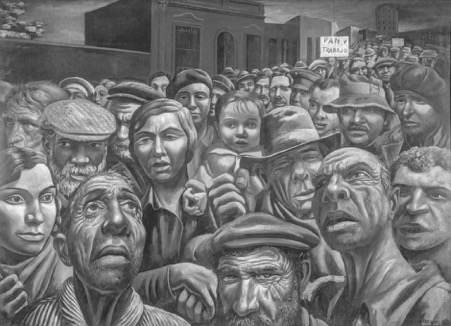
Antonio Berni, Manifestación (1934); Museo de Arte Latinoamericano de Buenos Aires (MALBA), Buenos Aires, Argentina
Recently, there has been an increase in mistrust regarding the political establishment. Forms of expressing this disconformity have been at the centre of public and academic discussion. Countercultures, as attempts to find an alternative to social conformity, are central to these expressions of dissent. Books like Angela Nagle’s Kill All Normies: Online culture wars from 4chan and Tumblr to Trump and the alt-right (2017) highlight the resurgence of youth subcultures in the last decade. Correspondingly, counterculture movements on both sides of the political divide have seen their numbers multiplied.
Art, fashion, literature, cinema and music have historically been vehicles to express and disseminate dissent. From the murals of Diego Rivera to those of Banksy, and from the Romantic Jacobins to the South African EFF, dissenting and countercultural movements have used the arts to stand against powerful social institutions. Likewise, countercultural movements have found their way into the politics of those who want to preserve the existing social structures. Donald Trump’s promise to ‘Drain the Swamp’ while reinforcing conservative values appealed to a large mass of US voters who saw the rise of the left as a menace to their lifestyle. In this context of anti-establishment sentiment, large corporations, too, have made use of the aesthetics of dissent for private gain, as was the case with Pepsi Co.’s controversial Kendall Jenner ad.
Issue 26 of FORUM engages with a range of disciplines that engage with the notions of counterculture and dissent.
Editors: Maria Torres-Quevedo and Valentina P. Aparicio
Review Team Autumn 2017: Enti Arends, Tamara Browne*, Rachel Chung, Richard Elliott*, Miklas Fahrenwaldt, Kiefer Holland*, Anna Kemball, June Laurenson, Dorothy Lawrenson, Kyriana Lynch*, Beata Migut, Aija Oksman, Alycia Pirmohamed, Vivek Santayana, Julie Sorokurs, Marianne Tyvand, Toni Velikova, Article editors are marked with a (*).
-

Truth
No. 25 (2017)Image: Copyright Wellcome Images
The idea of truth has become all the more contentious in light of recent social and political developments. Truth claims have long been a cause for scepticism within the humanities, with the advent of poststructuralism particularly highlighting the interaction between “truth” and power, leading scholars to be suspicious of transcendental truths or metanarratives. Feminists and writers of colour have raised similar concerns about truth claims; Jane Flax asks, “If there is no objective basis for distinguishing between true and false beliefs, then it seems that power alone will determine the outcome of competing truth claims” (Feminism/Postmodernism 42). In this light, discourses surrounding truth have been deemed somewhat suspicious, particularly for marginalised groups. There has likewise been scrutiny on the truth effects created in literature, and how generic conventions naturalise certain metanarratives. With this in mind, how can literature and popular culture use fiction to engage with truth and the power dynamics implicit in it?
The position of truth in the humanities has been further complicated by recent public discourse, influenced by the Trump administration and the Brexit campaign. These have ushered in an era of post-truth, Oxford English Dictionary’s word of the year 2016. Post- truth, which the OED describes as a state in which public opinion is based on emotion and belief rather than objective fact, closely aligns with what Stephen Colbert refers to as “truthiness,” defined as “the belief in what you feel to be true rather than what the facts will support” (“‘Post-Truth' Is Just A Rip-Off Of ‘Truthiness’” YouTube). The post-truth era has highlighted the dangers of eschewing the notion of truth altogether, exposing how easily the pubic can be swayed by arguments that tap into their social anxiety and biases, regardless of conflicting evidence. What role can both fiction and non-fiction play in navigating the post- truth era? How is the distinction between fiction and non-fiction complicated by the precarious position of truth in contemporary society?
Issue 25 of FORUM engages with a range of disciplines that consider the concept of truth in a post-truth era.
Editors: Vicki Madden and Maria Torres-Quevedo
Review Team Autumn 2017: Sibyl Adam, Valentina Paz Aparicio, Enti Arends, Tamara Browne, Rachel Chung*, Sini Eikonsalo, Richard Elliott, Abby Gould, Eleanor Grayson*, Kiefer Holland, Anna Jurek, Anna Kemball*, June Laurenson, Kyriana Lynch*, Harriet MacMillan, Jen Madeley, Mohamed Mahmoud, Ciara McKay, Stella Medvedeva, Beata Migut, Bridget Moynihan, Aija Oksman, Alycia Pirmohamed, Robyn Pritzker, Vivek Santayana, Julie Sorokurs, Marianne Tyvand, Toni Velikova, Felix von Helden. Article editors are marked with a (*).
-

Taboo
No. 24 (2017) Image: “Saturn Devouring His Son,” Francisco Goya, c. 1819-1823
Image: “Saturn Devouring His Son,” Francisco Goya, c. 1819-1823
Taboo permeates all aspects of everyday life, acting as the boundary against which society polices human experience and experimentation. Frequently characterised as social or religious customs that proscribe particular ideas, practices, words or persons, taboos not only help define a set of shared rules for society, but also clarify the limitations of the accepted.
Kelly Hurley highlights the positive facets of taboo, suggesting that it is only through the enforcement of certain boundaries that humans might “continue to experience the world as an epistemologically stable site” (The Gothic Body 25). Mary Douglas, meanwhile, argues that although taboos act as a safeguard against social disorder, they often become repressive for members of society. In light of these contrasting views, are specific taboos indeed necessary for social stability, or do they simply hinder progress?
Taboos differ across cultures, religions, and time; yet certain forbidden practices like incest, cannibalism, and murder seem more universally regarded. Why might this be? Changing social standards also create new taboos that reflect a particular historical moment. Tracing the ways in which taboos arise and are challenged therefore not only reveals these standards, but also society’s anxieties, fears, and nightmares.
Issue 24 of FORUM seeks contributions from a range of disciplines that engage with the concept of taboo. To what extents are civilisations structured around taboos? How might taboos reveal the darker, or even the suppressed side of society? In what ways do art and literature provide avenues for the exploration of taboo? Do taboos inevitably drive the homogenisation of both landscapes and people? In what ways might breaking taboos offer opportunities for liberation? Are there some taboos that should never be broken?
Issue 24 of FORUM engages with a wide range of disciplines that consider the topic of taboo.
Editors: Anahit Behrooz and Vicki Madden
Review Team Spring 2017: Valentina Aparicio*, Suzanne Black, Tamara Browne, Michelle Devereaux, Richard Elliott, Enti Erends, Robert Fell, Danielle Howarth, Alice Kelly, Mohamed Mahmoud*, Stella Medvedeva, Alberto Nanni, Vivek Santayana*, Eva Spisiakova, Maria Elena Torres-Quevedo*, Tomas Vergara, Aran Ward Sell, Jo Wilson.
Article editors are marked with a star (*)
-

Readers and Writers
No. 23 (2016)From the earliest traces of etchings on stone tablets to the emergence of Kindles and e-readers in contemporary society, humans have invented platforms for the creation and dissemination of text. Implicit in each textual object are the figures of the reader and writer and their differing engagement with the work. But what does it mean to be a reader or a writer, and how does each role play a part in the shaping of a text?
In 1967, Roland Barthes famously proclaimed the death of the author, arguing that it was for the reader to instil meaning in a text. Barthes’ essay questioned the existing hierarchy of writer above reader, and initiated new discussion on their roles. Reader response critics such as Hans Robert Jauss have also considered the impact of an individual’s experiences on textual interpretation. What effects have such theories had on previous understandings of the reader/writer relationship? How can we conceptualise these roles in an increasingly complex literary and textual environment?
It is not only the experiences of the individual reader and writer that are interrogated. We can now ask what role the market plays in redefining these two figures. Robert Darnton’s Communication Circuit draws attention to socio-political and commercial forces that impact the creation, production and distribution of a book. How do such models complicate the dialogical relationship between reader and writer?
How do literary devices alter our perception of the reader/writer figure? Those such as frame narratives and epistolary forms place readers and writers at the centre of the text, while the found manuscript and false document conceit in fiction work to remove the presence of the author in order to foster verisimilitude. What do these metafictions say about the changing social, cultural and intellectual nature of reading and writing?
Issue 23 of FORUM engages with a range of disciplines that consider the topic of readers and writers.
Editors: Matthew Tibble and Anahit Behrooz
Review Team Winter 2016: America Archer*, Emily Bartran, Suzanne Black, Brad Copper, Mila Daskalova*, Mary Dodd, Cristina Dodson, Paulina Drégvaité, James Gilbert, Katie Goh, Charlotte Kessler*, Harry Leonard, Kate Lewis Hood*, Harriet MacMillan, Emanuela Militeuo, Bridget Moynihan, Carolina Palacios, Robyn Pritzker, Sian Roberts, Toby Sharpe*, Dylan Taylor*, Marianne Tyvand.
Article editors are marked with a star (*) -

Ideological Conflict
No. 22 (2016)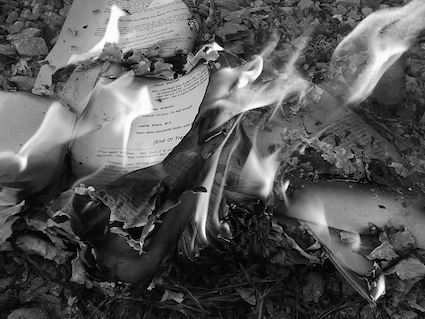
Armed conflict has ravaged Syria for over four years. The initial protest against President Bashar al-Assad’s regime has escalated to a civil war that has drawn intercession from major world powers, arguably exacerbating the situation, and maintaining the issue of ideological conflict at the forefront of popular culture and media. After the recent attacks in Beirut, Paris, and Bagdad, discussion has centred particularly on Islamophobia and the increasingly perceived dichotomy between Islamic and Western political systems. After Francis Fukuyama famously declared the end of the great ideological battles, Issue 22 of FORUM looks to explore instead Jasmine Gani’s suggestion that we should be “bringing back ideas,” when analysing this new era of entrenched conflict.
We might define ideological conflict as the mental, verbal or physical manifestation of dissension between two cultures with different sets of beliefs. Such cultural hostility might be characterised by xenophobia, ‘otherness’, or racial prejudice, all of which are saturated with the violent historical precedent which helped construct them. What light can be shed on today’s hostilities by the analysis of past example?
Conflicts can be between political systems, economic systems, religions, races, and even social philosophies, however, it doesn’t always occur on a grand scale - at a state or global level. The notion of private ideology also brings with it an internal conflict between personal belief and societal hegemony, raising questions about how an individual contends with this, imaginatively or pragmatically.
Chiefly, the violence that results from ideological conflict has been analysed using a rhetoric of ‘terror’ and ‘persecution’, yet the value of terms like these is clearly limited. How do we go about differentiating between nationalistic and religious components of ideological conflict? What purpose do we have for denotations such as ‘terrorist’, which are being used increasingly to justify state-sanctioned violence? And what of the notion that juxtaposed ideologies necessarily result in conflict?
Issue 22 of FORUM engages with the debate about ideological conflict and the use of ideology as a tool of analysis.
Editors: Emma Sullivan and Matthew Tibble
Review Team Spring 2016: Anahit Behrooz*, Kenneth Chan, Adam Clay, Camille Feidt*, Alex Grafen*, Julia Haase, Niki Holzapfel, Jo Hsu, Alice Kelly, Harriet MacMillan, Vicki Madden*, Genevieve McNutt, Bridget Moynihan, Kanokporn Nutchananonthep, Robyn Pritzker, Sarah Rengel, Vivek Santayana*, Thanos Spiliotakaras, Sarah Stewart, Joanna Wilson, Kelvin Wong Article editors are marked with a star (*)
-

Private/Public
No. 21 (2015)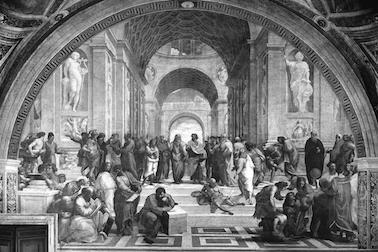
There has been a significant shift in the boundaries between the private and public realm in recent years. The increasing indistinction between the two spheres has multiple causes, among them the rise of identity politics and the popularity of the confessional mode. The former might be said to underwrite the latter: the feminist rallying cry, ‘the personal is the political’ providing a substantial justification for radical autobiography. The motto continues as a cornerstone of feminist consciousness, as well as other forms of identity politics (after all, the agora remains predicated upon exclusion to some degree), but the ongoing consequences for public discourse are unclear. Some suggest that the privileging of positions based upon more and more specific identities promotes a form of narcissism or victimhood which threatens collective agency and the possibilities of larger conceptions of ‘the public good’.
While identity politics and the confessional mode have contributed to the enlargement of ‘the private’, the increasing dominance of the corporate model has led to the erosion of what has traditionally been conceived of as ‘the public’, most notably in the commercialisation of the media, and the edging out of the public-interest model. Institutions such as museums, universities and schools have also become defined by the corporate paradigm, and public space is increasingly no such thing. New technologies, in particular social media, have played their part in blurring the boundaries between public and private, formal and informal.
Has there been a retreat into private and individualised experience? Have the critical languages that might abstract this individualised experience been largely abandoned in favour of the logic of spectacle? What constitutes the public sphere in the contemporary moment? If the traditional notion of the public sphere involves a ‘top down' model, what are the possibilities for the ‘bottom-up’ paradigm offered by the commons, and enabled by online networks?
Issue 21 of FORUM engages with the debate about the distinctions or indistinctions between the private and public spheres.
Editors: Sarah Bernstein and Emma Sullivan
Review Team Winter 2015: Sarah Arens, Laura Beattie, Anahit Behrooz, Kenneth Chan, Michelle Devereaux, Chloe Elder*, Camille Feidt, Alex Grafen, Niki Holzapfel, Alice Kelly*, Julia Kropf, Mengchen Lang, Delaina Lawson*, Vicki Madden, Clara Martinez, Briar McFarlane, Iain McMaster, Alba Morollón, Bridget Moynihan, Feroz Salam, Vivek Santayana*, Justine Seran, Jennifer Shearman, Colin Smith*, Thanos Spiliotakaras, Sarah Stewart, Greer Temnick, Matthew Tibble, Amy Waterson, Kelvin Wong Article editors are marked with a star (*)
-

After the Good Life
No. 20 (2015)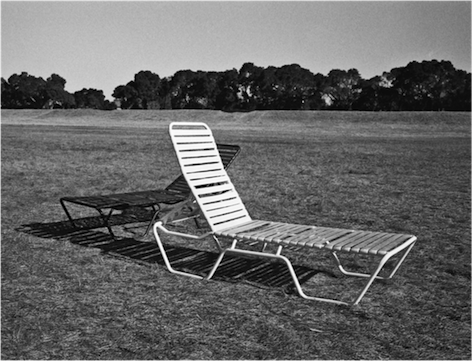
©Mark A. Nye
In Cruel Optimism (2011), Lauren Berlant asks why we stay “attached to conventional good-life fantasies – say of enduring reciprocity in couples, families, political systems, institutions, markets and at work – when the evidence of their instability, fragility, and dear cost abounds” (2). The post-1945 social consensus in Britain, the reproduction of the American Dream, and the social democratic promises made across Europe are political expressions of the good-life fantasy after World War Two. These social contracts have long since worn out, put under pressure from various financial crises since the 1970s and radical shifts in the political landscape. Meanwhile, we have witnessed the rollback of welfare, of healthcare benefits, of pensions; we have seen the casualisation of the workforce, massive unemployment, and the attenuation of trade union power. In short, as David Harvey writes, as the post-war boom broke up in the early 1970s, Europe and the United States in particular have sustained an extended period of flux, of change, and of uncertainty. How is it, then, that the fantasy of the good life persists in the face of such contingency? Why do we still need the model of a ‘good life’?
Issue 20 of FORUM examines what the good life looks like under austerity, under economic, ecological, and social crisis, under neoliberalism and what comes after. How do relations of gender, race, ethnicity and sexuality affect our visions of the good life?
Editors: Yanbing Er and Sarah Bernstein
Review Team Spring 2015: Chiara Amoretti*, Valentina Aparicio, Enti Arends, Sarah Arens, Victoria Chang*, Cheer Cheng, Muireann Crowley, Priscilla Gan, Jo Hsu, Tian Jin, Alice Kelly, Beatriz Lopez, Clara Martinez*, Iain McMaster, Gena McNutt, Alba Morollón, Bianka Nedjalkova, Alistair Robinson*, Jasleen Singh, Rachel Smith, Eystein Thanisch. Article Editors are marked with a star(*).
-

Special Issue 04: Transnational Memory and Traumatic Histories
2015
Memory studies has moved from the cultural collective, rooted within the bounds of the nation state, to the transnational or transcultural, which in recent years has come to account for the circulation of “memory cultures” in an increasingly complex, globalised and violent world. In what follows, the essays in this special issue on Transnational Memory and Traumatic Histories are briefly introduced and contextualised within this transcultural framework.
Managing and article editors
Christina Brennan & Joseph Ford (University of Leeds)
Board of peer reviewers
Dr Patrick Crowley (University College Cork)
Dr Claire Launchbury (University of New South Wales)
Dr Helen Finch (University of Leeds)
Dr Cathy Gelbin (University of Manchester)
Prof. Bill Niven (University of Nottingham, Trent)
Dr Anna Lena Sandberg (University of Copenhagen)
Prof. Max Silverman (University of Leeds)
-

The New Materialisms
No. 19 (2014)The role of matter has often been marginalised in much of philosophical thought. Rapid scientific and technological advances in the twentieth century, however, have since heightened the awareness of our place in the world as embodied human beings. This has revealed a pressing urgency to confront the ethical and political implications of our material practices within the dynamic terrain of contemporary times. As such, recognising the importance of material factors has led to an emergence of ways in which our prevailing understandings of material reality can be transformed. These recent accounts of a new materialist philosophy call for a redefinition of matter: not an inert or passive substance as traditionally conceived, but rather that which is in possession of an inherently unpredictable force and vitality.
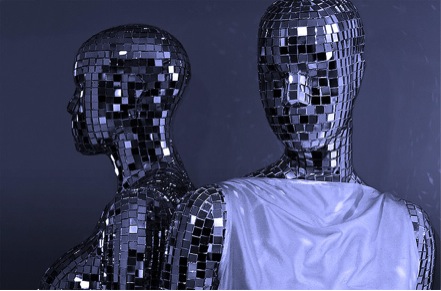
© Mark Welbedacht
Investigations into the agency of matter are currently occurring in areas such as material culture, ecocritical discourses, material feminisms, and science studies, where material reality has been given particular emphasis. This is not an abandonment of historical legacies of materialist thought, but an attempt to reconsider the notion of matter in the face of various geopolitical and biotechnological forces acting in the world today. The turn to envisioning new processes of materialisation thus attempts to cultivate a paradigm that rethinks the dualities of nature and culture, language and reality, mind and body, and the human and the inhuman. As an emerging interdisciplinary field, the new materialist studies precipitate a radicalisation of what ‘matter’ truly means.
Editors: Jessica Legacy and Yanbing Er
Review Team Autumn 2014: Sybil Adam, Chiara Amoretti, Valentina Aparicio, Enti Arends, Georgina Barker, Meg Bartlett, Sarah Bernstein, Nina Bickett, Jane Bonsall, Dorothy Butchard, Natalie Carthy, Victoria Chang, Mingyuan Chen, Lijiaozi Cheng, Chang-Ting Chou, Beth Cochrane*, Hannah Collins, Christian Cooijmans, Glynnis Cox, Poppy Cozens, Muireann Crowley, Marta Dabrowka, Mario Delgado, Will Dudding, Valentina Flex, Carlos Fonseca, Katie Hawthorne, Beide Hu, Tian Jin*, Alice Kelly, Jeremy Klemin, Rob Lederer, Anna Leibing, James Leveque, Beatriz Lopez, Clara Martinez, Dominique Mason, Iain McMaster*, Aoife McNeice, Gena McNutt, Marianne McRae, Alba Morollon, Bianka Nedjalkova, Diane Otosaka, Carin Pettersson, Fiona Piercy, Alistair Robinson*, Gabi Roth, Aidan Ryan*, Feroz Salam, Cat Schaupp, Denis Schröder, Justine Seran, Sarah Sharp*, Jasleen Singh, Nick Spengler*, Jessica Syers, Tomas Vergara, Jacqueline Wallace, Annie Webster, Grace Wilkins. Article Editors are marked with a star(*).
-

Cliché
No. 18 (2014)As writers and academics we fear having our work criticised as clichés; yet, we continue to repeat and overwork certain ideas of the brink. If we are to believe Marshall McLuhan, “it is the worn out cliché that reveals the creative or archetypal processes in language as in all other processes and artefacts” (Cliché to Archetype 127). The pursuit of newness requires us to label precursors as old and eventually worn out, thereby rendering them cliché. At the same time, a phrase, symbol, or trope would not be used to the point of cliché if it did not continue to strike a chord with so many artists or thinkers. Clichés are cultural relics reread and relocated as benchmarks for new art and interpretation.

Gilles Deleuze argues that cliché comes pre-printed on a blank canvas, and though the artist attempts to subvert cliché, the action is too intellectual or abstract and the result is either the same cliché risen from the ashes or disguised as a parody. Similarly, Umberto Eco argues that by employing multiple clichés a narrative moves beyond the creators’ control. These writers suggest that cliché has a sentience or at the very least a pulse in our culture. If clichés are unavoidable or perhaps even necessary, why are they feared or disdained? What are the parameters that move an idea from archetype or symbol to cliché? When, if ever, are clichés appropriate? It seems that you can’t keep a good cliché down, that you’re damned if you do and damned if you don’t, but perhaps if cliché is handled properly, all’s well that ends well.
Editors: Victoria Anker & Jessica Legacy
Review Team Spring 2014: Emily Anderson*, Enti Arends, Sarah Bernstein*, Imogen Block, Philippa Chun, Glynnis Cox, Dave Crosbie, Muireann Crowley, Marta Dabrowka, Laura de la Parra Fernández, James Leveque, Clara Martínez, Dominique Mason*, Ian McMaster, Fiona McPake, Genevieve Sartor, Cat Schaupp*, Madden Swan. Article Editors are marked with a star(*)
-

Special Issue 03: ReVision Conference
2014On 15-16 July 2013, FORUM organised their third conference entitled ReVision: Editing Across Disciplines. In this conference, participants were invited to explore the variety of practices and concepts of editing across disciplines and as they appear in different historical and cultural contexts, as well as to reflect on the opportunities, goals and challenges of contemporary editing and publishing.
The dynamic life of cultural products is often masked by illusions of textual stability. Processes of editing have always had a radical impact on the arts and their reception; from Herodotus’s ‘editing’ of history, the editing of Chaucer's brilliant but foul language, Beardsley's censored drawings in Wilde's editions, Luis Buñuel's unique montage editing to the work of Venuti and the rise of disciplines such as History of the Book. Furthermore, current economic pressures and rapid technological changes raise the question of the future of the ‘text’ in a digital age.
The Guest Contribution to this issue is based on one of the workshops delivered at this conference: Kenna Olsen’s (Mount Royal University) "Editing the Middle Ages: Medieval Manuscripts, Hypertexts, Academe and Beyond." Selected papers from the conference are gathered here in Special Issue 03, including: a comparative analysis of film editing strategies; an exploration of the narrative and mnemonic powers of place; a diachronic analysis of the changes to the Lindisfarne Gospels; an analysis of documentary editing strategies; an intermedial exploration of music in book and film; and an examination of textual strategies in the negotiation of fame.
Editors: Victoria Anker & Laura Chapot
Review Team Autumn 2013: Georgina Barker*, Philippa Chun*, Glynnis Cox*, Marta Dabrowka, Yanbing Er*, Jan Gobrecht, Olivia Ho, Vicki Madden*, Dominique Mason*, Cat Schaupp, Lizzie Stewart. Article Editors are marked with a star(*)
-

Rites & Rituals
No. 17 (2013)All the world’s a stage
And all the men and women merely players;
They have their exits and their entrances;
And one man in his time plays many parts” (Jacques, AYLI 2:7).
Rituals exist as a result of the actions of specific people or institutions; we recognise those rituals because they are engrained in our cultural customs as much as they are ordained by law. The resulting rituals not only reinforce the beliefs or values of these specific communities, but simultaneously define these group identities. Victor Turner describes rituals as ‘social dramas’ that allow any given culture to maintain a balance between structurally enforced norms and personal autonomy; the medieval carnival with its Lord of Misrule, for example, permitted a short period of topsy-turvy, upside-down role-play in popular culture, to ensure social hierarchies and authority were obeyed and enforced during the rest of the year.

'Battle between Carnival and Lent' (1559), P. Bruegel
Drawing upon the ritual theory of Stanley J. Tambiah, Mary Ann McGrath and others, this interdisciplinary issue – our 17thpublication – spans 800 years of history and several continents from twelfth-century Russia, to contemporary America, via mafia initiation oaths and the British occult. Drawing upon architecture, history, literature, and performance, the collected articles in Rites & Rituals emphasise the necessity of ritual in both reaffirming the individual's position within society and enabling a sense of communitas throughout society.
Editors: Victoria Anker & Laura Chapot
Review Team Autumn 2013: Marie Allitt, Emily Anderson, Michelle Anjirbag*, Selina Aragon, Enti Arends*, Candace Bagley, Georgina Barker, Yahya Barry, Sarah Bernstein, Imogen Block, Adam Bloom, Philippa Chun, Kyle Cooper, Raph Cormack, Nicole Cote, Glynnis Cox, Dave Crosbie*, Muireann Crowley, Marta Dabrowka, Kate Dunn, Yanbing Er, Laura de la Parra Fernández, Alison Garden, Jan Gobrecht, Sarah Gundle*, Sarah Hayden, Qianwei He, Katie Hickey, Sarah Hicks, Olivia Ho, Heid Jerstad, Rob Lederer, Jessica Legacy*, Hannah Lesshafft, James Leveque, Phoebe Linton, Vicki Madden, Clara Martínez, Dominique Mason, Ian McMaster, Catherine McMillan, Fiona McPake, Genevieve McNutt, Anastasios Panagiotopoulos, Sandra Paziewicz, Cat Schaupp, Justine Seran, Dawn Sherratt-Bado, Nick Spengler, Deirdre Stack-Marques, Lizzie Stewart, Madden Swan*, Melissa Thornton. Article Editors are marked with a star(*)
-

Un/Natural Histories
No. 16 (2013)Although European thought has traditionally placed “nature” in opposition to “culture,” recent work in eco-criticism has emphasised the importance of the relationship between our environment and the literary and scholarly work we produce. Similarly, in popular culture, programmes such as the BBC’s Unnatural Histories (2011) investigate the ways in which even the most pristine “natural” spaces can be seen as human constructions. These approaches not only emphasise the relationship between nature and culture as an object of investigation, but also indicate that the way in which this relationship is perceived may not be as “natural” as we assume. A historicising exploration of the natural is taken up and expanded on by the articles gathered in this issue of Forum, which includes work from scholars based in disciplines as diverse as anthropology, science and technology studies, literature and film studies.
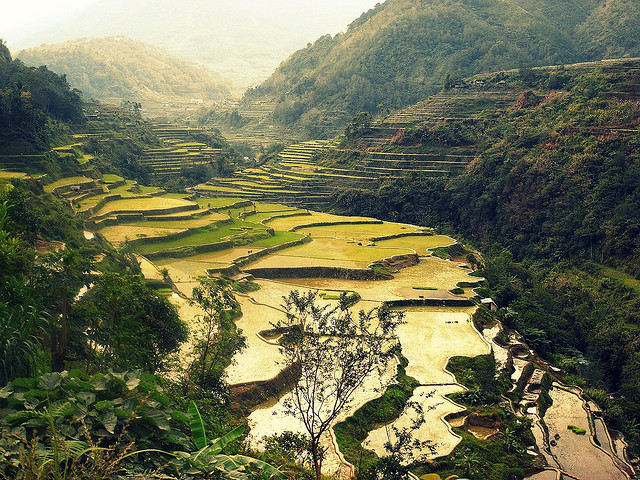
Fields of Gold', Rice Fields in Banaue in the Philippines, by kudumomo 19/02/2010 (link to original).
The degree to which our relationship to the natural colours not only our representations of the environment in art and literature but also our self-representations and attitudes as scholars provides the starting point for the first of our guest contributions from anthropologist Mattijs van de Port. Charting the relationship between his father’s fetishisation of “natural” materials and modes of behaviour and his own punk embrace of the explicitly artificial, Van de Port interrogates his personal experiences of the natural in everyday materials and practices before linking these with a discussion of his research into camp and baroque as denaturalising aesthetics which nevertheless provoke bodily reactions. Van de Port’s anthropological perspective on his position as researcher provides a candid insight into the links between the personal environment and research, which we hope will be of particular relevance to a postgraduate readership.
The desire to provoke new reactions and ways of reading is also at the heart of the article of our second guest contributor, Christopher Leslie. Leslie re-reads Shakespeare’s The Tempest to undertake an examination both of the roots of Natural History and of related contemporary discourses on the categorisation of humans. Not only does this function to historicise and so denaturalise a teleological view of developments in scientific enquiry and thought, for Leslie it also has important pedagogic value. He suggests that The Tempest “represents a unique opportunity to understand that the pre-Enlightenment vision of deductive thinking based on Aristotle did not necessarily promote racial hierarchy,” an insight, as he argues, which allows one to focus on the processes behind racialisation, the social construction of race (10, 2).
This engaged approach to scholarship is continued in Emma Trott and Justine Seran’s analyses of postcolonial writing through an eco-critical lens. In Seran’s reading of Keri Hulme’s short stories, literary techniques associated with realism, the Gothic, magical realism and the fantastic combine with disturbing personifications of nature to create a “composite literature of unease” centred on the protagonists’ “mutually deleterious relationship with nature” (9). For Trott, on the other hand, Derek Walcott’s use of language and, in particular, metaphor “articulates the tight bonds between various material and ideological processes that are significant to the poet’s commitment to social and environmental justice,” and creates a future-orientated view of the Caribbean “that is free, not from the brutal fact of the colonial past, but from enduring neo-colonial projects that mark Caribbean islands as dehistoricised Edenic spaces that are fair game for the European coloniser” (11, 5). Laura Beattie’s article on Sean Penn’s film version of Into the Wild then takes us into an exploration of recent filmic constructions of the American wilderness, unpacking the ways in which the creation of dehistoricised spaces within the national imaginary is both continued and critiqued by the films structure and visual imagery.
Returning to the sciences and their role in the construction of the natural, April Durham’s article takes us from twentieth century realities to imagined futures. Exploring Ridley-Scott’s sci-fi classic Blade Runner together with the French novel Babylon Babies, Durham aims to move beyond a focus on the “fear that technology and its intelligent actants [...] will profoundly undermine the subjectivity so carefully ascribed to biological humans” and instead open up an exploration of “what is at stake, besides masterful triumph over technology, when considering human intelligence as technically mediated” (1) This re-positioning of the human subject is also fundamental to Genevieve Sartor’s reading of Virginia Woolf’s Between the Acts through co-evolution and complexity theory. Sartor’s detailed analysis reveals a transformative impulse at the heart of the text where the “environment and the subjects within it are engaged in a form of reciprocity that eradicates a deterministic partitioning of species organisation” (1).
Finally, moving from Woolf to wolves, Håkon Stokland’s article on the construction of a population of wolves in Scandinavia as “natural” and so to be protected illustrates how crossing disciplinary boundaries between the humanities and the sciences can “change the subject” in more ways than one. Stokland convincingly argues: “[a]s the processes of constructing nature often have great impact on the politics concerning both nature and humans, they should be obvious targets for critical examination by scholars from the social sciences and the humanities” (1). While Leslie undoes the history of the discipline via Shakespeare, Stokland thus unravels the ways in which natural history is created and shapes environmental policy today.
Editors: Laura Chapot & Lizzie Stewart
Editorial Review Panel: Victoria Anker, Enti Arends, Dorothy Butchard, Muireann Crowley*, Marta Dąbrówka*, Kate Dunn, Mackenzie Doss, Yanbing Er*, Sarah Faulkner, Alison Garden*, Michael Hannan, Li-hsin Hsu, James Leveque, Lucy MacRae, Lila Matsumoto, Sophia Morris, Justine Seran, Dawn Sherratt-Bado*, Leah Stolzenburg, Mikey Woods*. Article Editors are marked with a star(*)
-

Imitation and Repetition
No. 15 (2012)As concepts which cross the disciplinary boundaries between the arts and the social sciences, imitation and repetition are frequently connoted in ways dependant on the contexts and time periods in which they occur. This is reflected in the articles collected in issue 15 of FORUM which explore manifestations of imitation and repetition in contexts as diverse ascontemporary memoir-writing (Pollard), knowledge exchange within academia (Götz),the critical theory of Judith Butler (Vulic), Sherlock Holmes fanfiction (Black), Scottish avant-garde poetry (Matsumoto), the work of James Joyce (Raghinaru) and Chinese Qing dynasty cultural production (Zhang). For many of our contributors from the fields of Translation Studies, Sociology, Philosophy, English Literature and Art History the terms not only become a source of investigation but also provide an exciting methodological challenge, while for others, such as our guest contributor Robert King, the very logic inherent in the terms becomes an object of inquiry in itself.
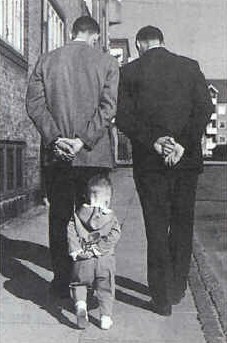
In his article “The New Creatures of Difference: A Look at the Concept of Repetition Within Dissipative Systems Theory,”King draws on Deleuze’s concept of repetition Difference and Repetition as a seemingly “mechanical replication” which hides a “clothed, disguised or secret repetition” (King 2-3). An exploration of the presence of repetition in the life sciences thus reveals how even when returning to philosophical thought, “repetition is better appreciated as a creature of difference” (4). This “creature of difference” continues to creep and crawl its way through the articles of our postgraduate contributors in various guises. The relationship between repetition and evolution, for example, takes a more metaphorical turn in Ana Vulic’s examination of “the evolution of the theory of performativity” via the repeatedly occurring, yet subtly changing “notion of promise” in the work of Judith Butler (1). Here King’s “creatures of difference” reappear reclothed as the “infelicitous” misfires Vulic identifies as creative differences bearing political promise.
While the occurrence of “misfires” in the intertextual relations surrounding the work of Judith Butler are the focus of Vulic’s article, the imitative and intertextual relationships between literary authors, styles and genres form the focus of many of the other articles collected here. Eileen Pollard explores intertextuality, adoption and story-telling within the work of two contemporary female authors who perform what Pollard labels “a Queer Return” to their own fictionalised autobiographies in the form of recently published memoirs with an emphasis on “truth, origin and narrative” (5). By questioning writers’ new emphasis on origins Pollard draws attention to a contemporary desire for repetition in what King might call its “naked form”.
Literary studies have, of course, a well-developed tradition of studying the imitative and intertextual relationships between authors, literary styles and genres, and ideas. In the artistic sphere, following the spread of the Romantic idea of the artistic genius, imitation has often been frowned upon as a failure to be ‘original,’ however Lila Matsumoto and Suzanne Black show, in unique ways, how imitation is not only at the heart of much creative practice but also threatens the status of the ‘original’. Camelia Raghinaru, on the other hand, explores internal repetition in the final moments of James Joyce’s Ulysses as an opportunity to start again after a period of hesitation. And moving to the field of art history, Stacey Zhang demonstrates how this effort to re-inscribe origins was manifested in the political economy of the Chinese Qing dynasty through mass production of a potent imperial symbol.
The recirculation and recoding of certain tropes and images which occurs not only in our author’s articles but also in even the most radical artistic attempts to break with the past, such as those embodied by movements like Dada, suggest that originality cannot be thought outside of its relationship to imitation and repetition. This ambivalence has proved productive not only for the researchers whose work is gathered here but also for commentators dating from Plato, and his concern with mimesis, to Judith Butler, who identified the role which the repetition, or continued performance, of cultural norms has in constituting the most central aspects of our identity. The interdisciplinary potential for an engagement with these terms is further reflected in Mara Götz’s article concerning strong and weak ties in the use of sociology in translation studies. Here creative repetition is situated within a delicate interplay between a close network of associations, and the desire to look over the fence into other fields.
Finally in our second guest article, a sociological perspective on repetition is taken further by Dr. Sarah Bracke who uses the concept of repetition as a departure point for providing an introduction to the origins and nature of nostalgia. Expertly connecting the genealogy of the idea to areas such as consumer capitalism and colonialism, Bracke argues that underneath nostalgia lies violence and the disavowal of violence; an approach which highlights the way in which a careful tracing of repetition-as-difference can also be used to interrogate mechanisms such as nostalgia anew.
Editors: James Leveque & Lizzie Stewart
Editorial Review Panel: Dima Alzayat, Victoria Anker, Selina Aragon*, Ann Bauer, Sandra Birkett, Elsa Bouet*, Michelle Brown, Dorothy Butchard, Pamela Carralero, Abigail Chapman, Laura Chapot, Danning Chen*, Muireann Crowley, Marta Dąbrówka, Marc Di Soto, Kate Dunn, Helius Egenberg, Michael Hannan, Rosie Hopegood, Li-hsin Hsu*, Esther Kim, Patricia Koulogeorge*, Wenchi Li, Lucy Linforth, Wancheng Liu, Jessica MacAulay, Lucy Macrae, Caroline Mandler, Dominique Mason, Lila Matsumoto, Erika Meyers, Sophia Morris-Jones, Genevieve Sartor, Justine Seran, Natasha Simonova, Mariel Stein, Stephanie Straub*, Simon Trub, Nouschka Van Der Meijden*, Barbara Vrachnas, Lena Waschkawitz, Maria Whelan*. Article Editors are marked with a star(*)
-

Sacred & Sacrilegious
No. 14 (2012)"There are in every man, always, two simultaneous allegiances, one to God, the other to Satan. Invocation of God, or Spirituality, is a desire to climb higher; that of Satan, or animality, is delight in descent." Charles Baudelaire, Flowers of Evil, My Heart Laid Bare.For the Spring 2012 issue of FORUM, we have gathered articles which explore representations of the sacred and sacrilegious. Deriving from the Latin verb sacrare, to consecrate, the word sacred initially and inevitably summons thoughts of gods and religions, worship and veneration. One of its antonyms, sacrilegious, etymologically originated from sacrare and the verb legere, to gather, to steal, oftentimes spawns images of violence and violation, heresy and blasphemy. However, the sacred and sacrilegious does not merely apply to theological matters but can be delved into from a literary, cultural and artistic perspective.

Since the 19th century in particular, the sacred was central to a revival in so-called 'primitive' concerns; but modern materialist and psychoanalytic theories of taboo, sacrifice, and magic revealed in the sacred the traces of social construction and psychological force otherwise obscured by centuries of tradition. A wealth of modernist literature and art conceived society and the self, rather than the supernatural or divine, as the sites of the distinction between the sacred and sacrilegious. Moreover, contemporary philosophy and theory revived the ambivalence in much of the language of the sacred in literature, philosophy, and politics - such as Julia Kristeva's conception of the sacred as either potentially pure or abject.
Nowadays sacred has even come to mean merely something that we honour, 'our precious', and sacrilegious is often tantamount to unorthodox or heterodox. In the 20th and 21st centuries, what notions of the sacred still capture us with a sense of awe; what forms of sacrilege, if any, do we still find repellent? Does the transition from the sacred to the sacrilegious (or vice versa) hold real meaning or is it a mere formality of self-appointed practitioners? Do literature, art and film only stand as adamant witnesses of the alteration in the meaning and significance of these two words throughout history, or do they have an active role in changing our understanding of the sacred and sacrilegious?
Editors: Barbara Vrachnas & James Leveque


